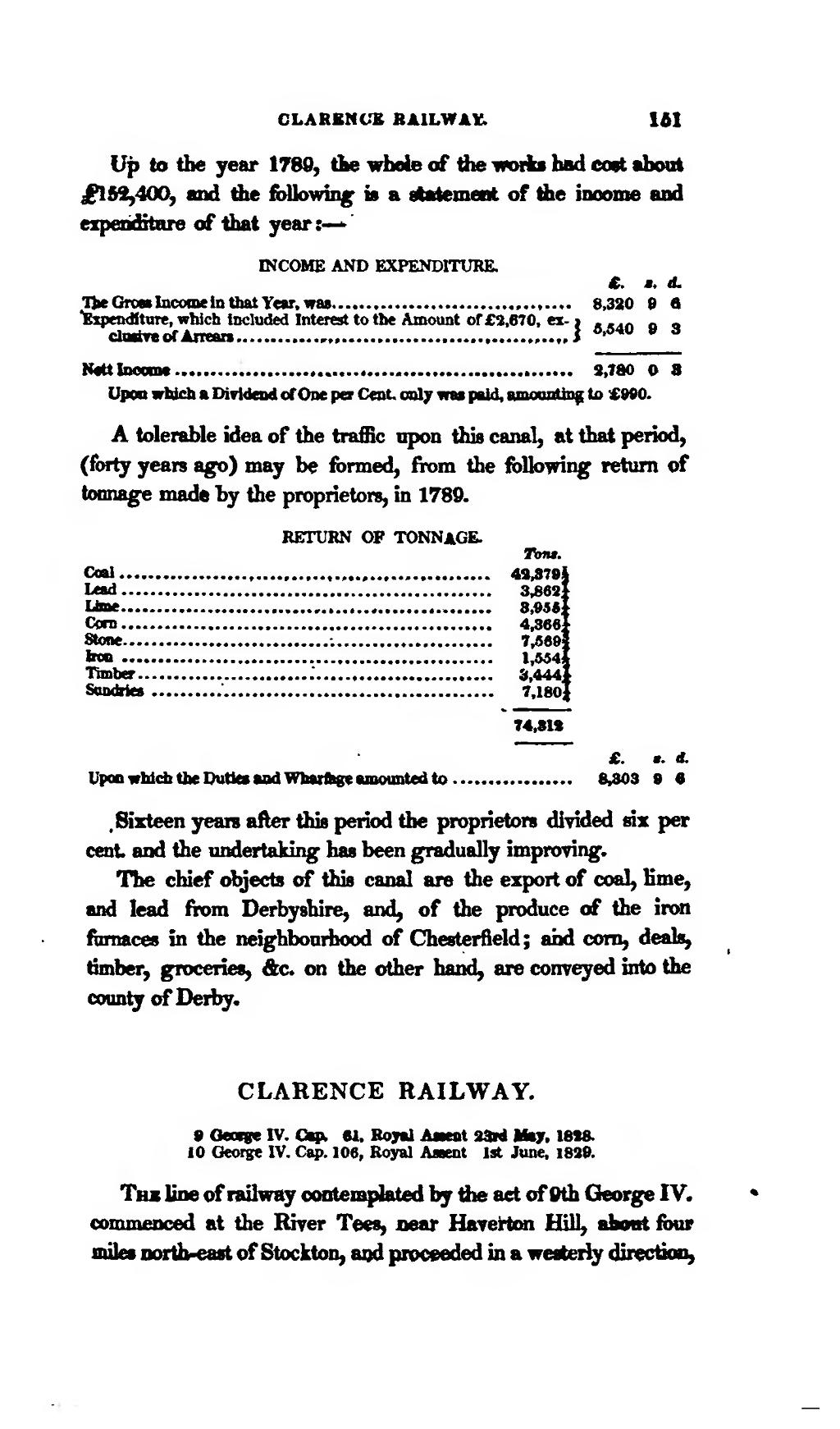Up to the year 1789, the whole of the works had cost about £152,400, and the following is a statemeat of the income and expenditure of that year:-
INCOME AND EXPENDITURE.
| . | £. | s. | d. |
| The Gross Income in that Year, was | 8,320 | 9 | 6 |
| Expenditure, which included Interest to the Amount of £2,670, exclusive of Arrears | 5,540 | 9 | 3 |
| Nett Income | 2,780 | 0 | 3 |
Upon which a Dividend of One per Cent. only was paid, amounting to £990.
A tolerable idea of the traffic upon this canal, at that period, (forty years ago) may be formed, from the following return of tonnage made by the proprietors, in 1789.
RETURN OF TONNAGE.
| . | Tons. |
| Coal | 42,379½ |
| Lead | 3,862½ |
| Lime | 3,955½ |
| Corn | 4,366½ |
| Stone | 7,569¾ |
| Iron | 1,554½ |
| Timber | 3,444½ |
| Sundries | 7,180½ |
| . | 74,312 |
Upon which the Duties and wharfage amounted to £8,303 9s. 6d.
Sixteen years after this period the proprietors divided six per cent, and the undertaking has been gradually improving.
The chief objects of this canal are the export of coal, lime, and lead from Derbyshire, and, of the produce of the iron furnaces in the neighbourhood of Chesterfield; and corn, deals, timber, groceries, &c. on the other hand, are conveyed into the county of Derby.
CLARENCE RAILWAY.
9 George IV. Cap. 61, Royal Assent 23rd May, 1828.
10 George IV. Cap. 106, Royal Assent 1st June, 1829.
THE line of railway contemplated by the act of 9th George IV. commenced at the River Tees, near Havertoa Hill, about four miles north-east of Stockton, and proceeded in a westerly direction,
